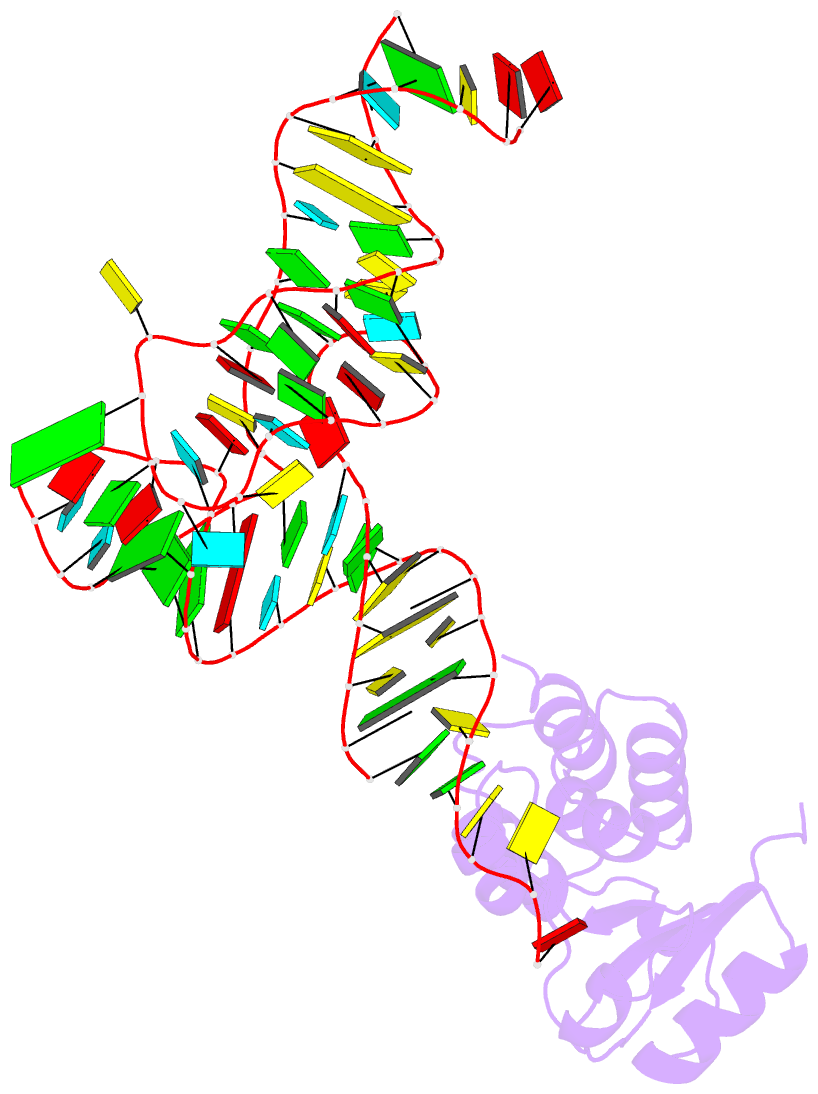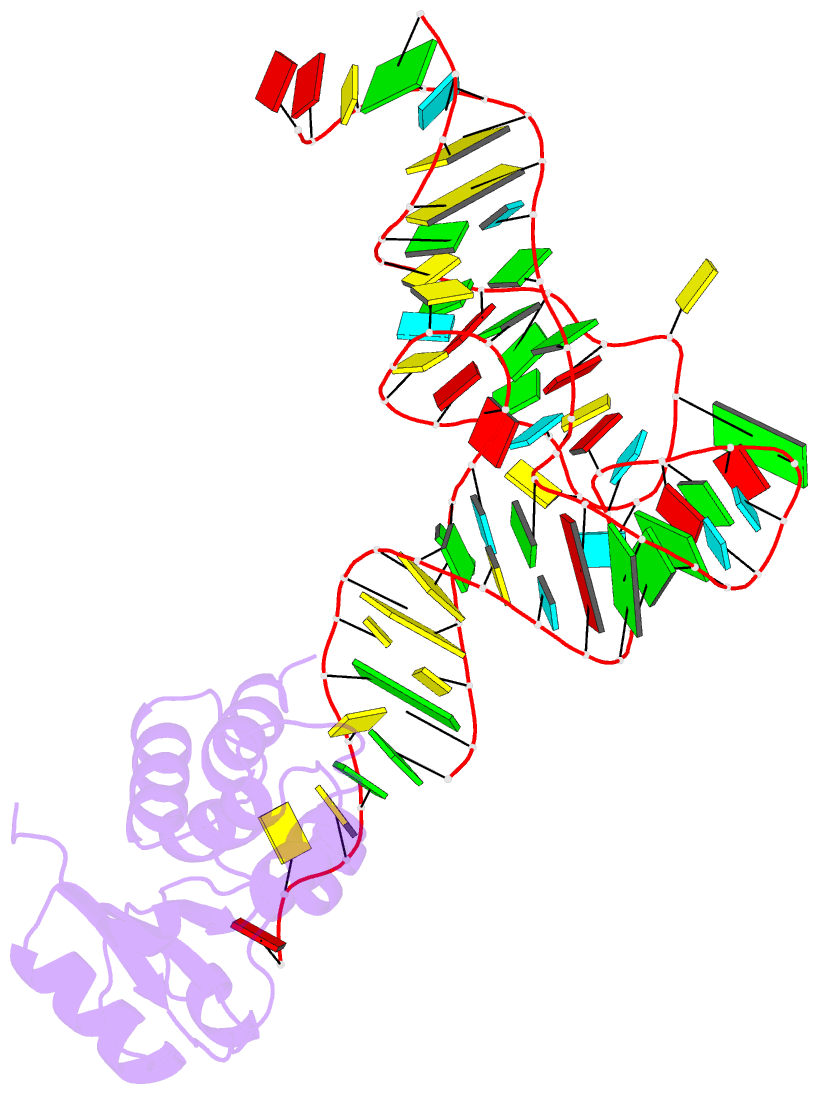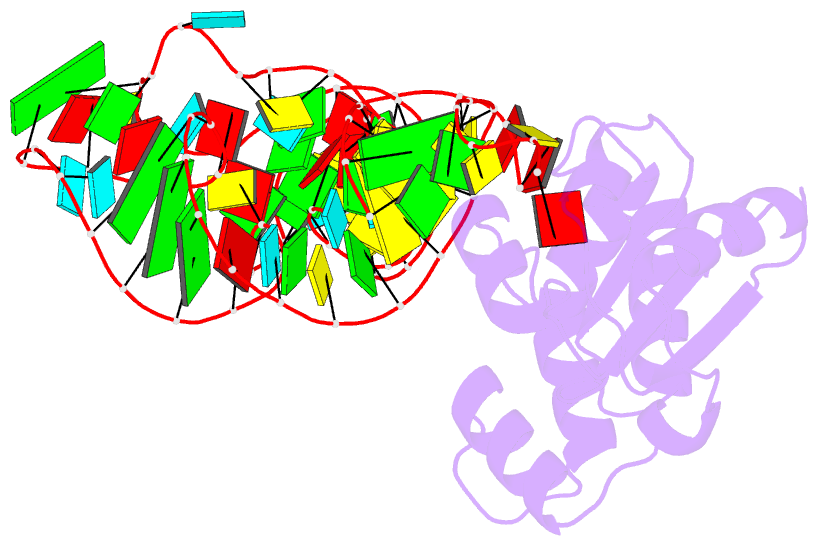Summary information and primary citation
- PDB-id
-
7kjt;
DSSR-derived features in text and
JSON formats; DNAproDB
- Class
- RNA binding protein-RNA
- Method
- X-ray (3.34 Å)
- Summary
- Keops trna modifying sub-complex of archaeal cgi121 and
trna
- Reference
-
Beenstock J, Ona SM, Porat J, Orlicky S, Wan LCK,
Ceccarelli DF, Maisonneuve P, Szilard RK, Yin Z,
Setiaputra D, Mao DYL, Khan M, Raval S, Schriemer DC,
Bayfield MA, Durocher D, Sicheri F (2020): "A
substrate binding model for the KEOPS tRNA modifying
complex." Nat Commun, 11,
6233. doi: 10.1038/s41467-020-19990-5.
- Abstract
- The KEOPS complex, which is conserved across archaea
and eukaryotes, is composed of four core subunits; Pcc1,
Kae1, Bud32 and Cgi121. KEOPS is crucial for the fitness of
all organisms examined. In humans, pathogenic mutations in
KEOPS genes lead to Galloway-Mowat syndrome, an
autosomal-recessive disease causing childhood lethality.
Kae1 catalyzes the universal and essential tRNA
modification N<sub>6</sub>-threonylcarbamoyl
adenosine, but the precise roles of all other KEOPS
subunits remain an enigma. Here we show using
structure-guided studies that Cgi121 recruits tRNA to KEOPS
by binding to its 3' CCA tail. A composite model of
KEOPS bound to tRNA reveals that all KEOPS subunits form an
extended tRNA-binding surface that we have validated in
vitro and in vivo to mediate the interaction with the tRNA
substrate and its modification. These findings provide a
framework for understanding the inner workings of KEOPS and
delineate why all KEOPS subunits are essential.





